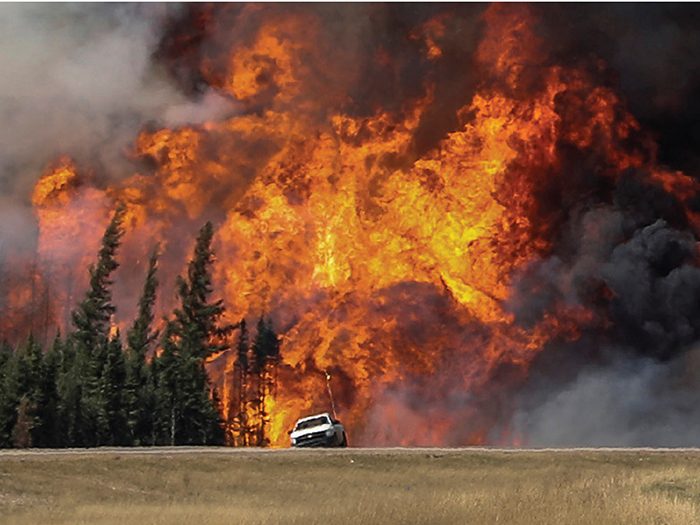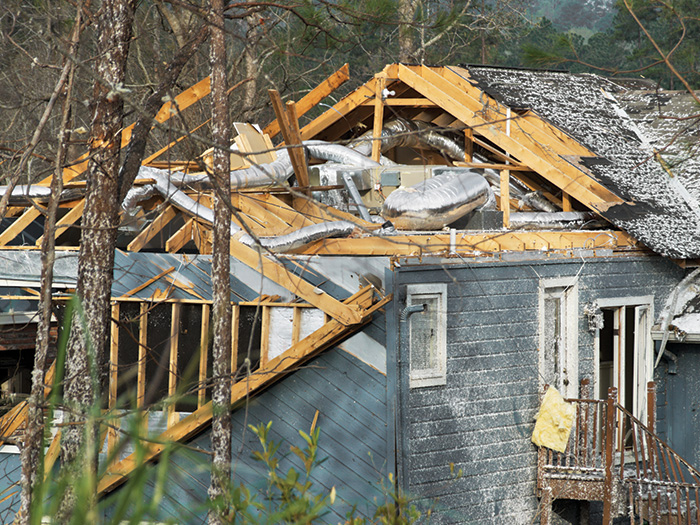California Infernos Put Sharp Focus on the Urgency of Wildfire Defense Strategies

As of November 9, a combined total of more than 1.6 million acres across California had burned, the result of more than 7,500 fires, according to the National Interagency Fire Center. Northern California’s Camp Fire has claimed 31 lives since it broke out on Nov. 8. Another 200 people are missing. The inferno has consumed 6,713 structures to date, and more than 15,000 remain at risk, according to the California Department of Forestry and Fire Protection (Cal Fire).
In the southern end of the state, the Woolsey Fire had burned 91,572 acres as of Monday morning and had destroyed an estimated 370 structures, killing at least 2 people. It has destroyed multiple celebrity homes and a historic movie site recently used by the HBO series “Westworld.” The entire community of Malibu has been evacuated.
The ferocity of wildfires in recent years is making them seemingly impossible to fight, even with emergency crews pulling out every possible stop. At the same time, environmentalists have warned that some fires are a part of the natural order of things and help maintain ecological balance.
Overzealous extinguishing of smaller, non-threatening fires is making the problem worse, leading to forest buildup and a glut of dead, combustible matter, increasing wildfire intensity.
While that may be so, the protection of life and property is paramount. So how can we strike the right balance in our approach to minimizing wildfire damage?
A Fire Scientist’s Quest for Answers
Jack Cohen, a researcher from the U.S. Fire Service, began exploring this topic decades ago, beginning by studying the emergency dispatch recordings from 1980’s Panorama fire.
He identified patterns that led him to conclude that wood roofing was part of the problem. Embers floating ahead of the blaze accumulated in the crevices around dry wood shingles and drifted into attic vents, setting fire to houses from above — even though the fire itself was half a mile away on the other side of a ridge.
Jack Cohen explains actions property owners can take to help structures survive the impacts of flames and embers.
Cohen also noticed that photos of the devastation from the Panorama fire and other major fires showed healthy trees surrounding the remains of burnt houses — compelling proof that properties were being destroyed even in areas not directly touched by the fire. Embers were the culprit.
Over the next several years, Cohen conducted extensive research into the behavior of fire and the various ways that a house could catch fire, including how close the flames of a wildfire had to be for a house to ignite simply from the radiant heat.
He developed guidelines for designing and landscaping, starting with a buffer called it the “Home Ignition Zone.” Cohen’s premise is that regardless of the size or intensity of the fire, the defining factor in whether a building burns is based on the ignition resistance level of the property within a 100-foot radius of the structure.
Shifting Focus to Ignition Risk
Even in the face of extreme wildfire behavior, houses properly buffered have a chance to survive, Cohen concluded. The need to fight fires would decrease dramatically if buildings near fire-prone areas are designed to withstand them. In fact, there would be no need to fight a fire if the only goal was to save houses — taking a significant number of forest fires out of the firefighting equation.
Here are six of Cohen’s critical recommendations:
- Replace flammable wood roofs
- Between 100 feet and 30 feet from the house, space trees so that the fire can’t jump between them and is forced to the ground
- Between 30 and 5 feet, landscape and design so the groundfire loses steam, by removing fuels like tall grasses and wood piles
- Within 5 feet of the house, use design elements that stop fire, like rock beds and well-irrigated grass
- Make sure the garage door has a tight seal with the concrete
- Remove highly flammable trees, such as decorative juniper trees
Few were interested in changing the status quo back in 1999 when Cohen first presented his findings to the public. But his ideas are gaining traction now and are more relevant than ever.
Slowly, more emphasis is being placed on strategies like creating “defensible space” by clearing the property of flammable materials. Vegetation management was given high priority in the language of California’s SB-901, signed by Gov. Jerry Brown on Sept. 21.
But much more could be done to make high-risk areas fire resilient.
To learn more about Cohen’s research and recommendations, and how wildfire strategy has evolved over the past few decades, check out the 99% Invisible podcast “Built to Burn,” aired only a week into this summer’s Carr Fire, which killed three firefighters and five civilians, and burned 229,651 acres. &










